Preparedness
Community Drills for Tornado-Prone Areas: Why They Matter
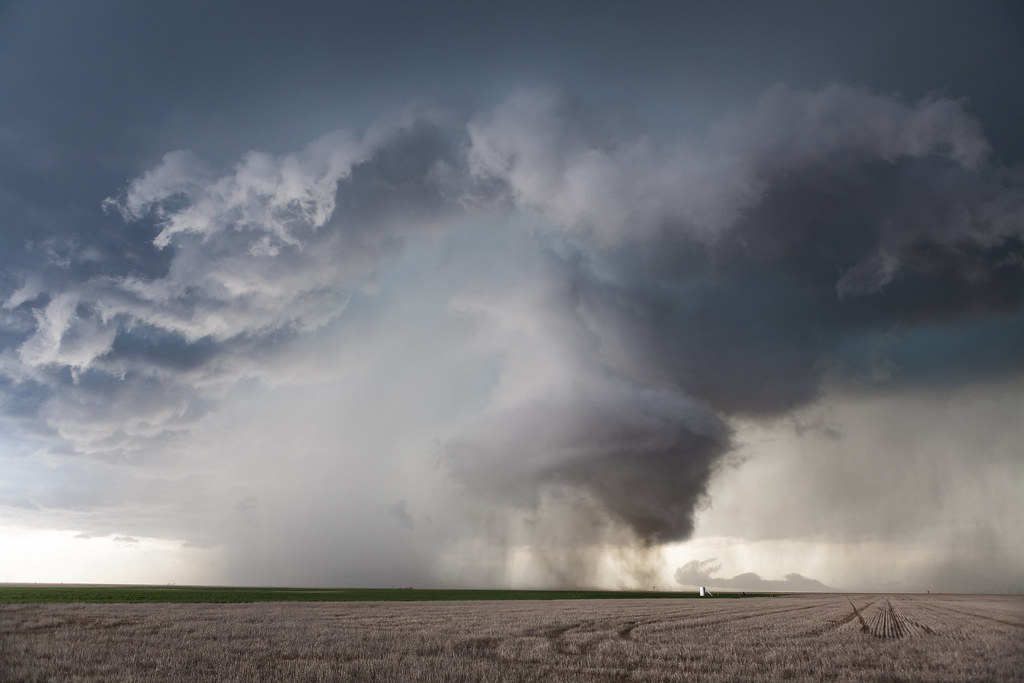
As we delve into the wild and unpredictable realms of survival and preparedness, it’s essential to recognize the grave threat posed by tornadoes in certain regions. Tornadoes are nature’s fury unleashed, capable of wreaking havoc within a matter of minutes. To ensure the safety and resilience of our communities in tornado-prone areas, we must emphasize the importance of regular community drills.
Tornadoes, often referred to as twisters, are violent and rotating columns of air that extend from thunderstorms to the ground. These natural disasters can strike with little warning, leaving little time for immediate action. That is why the practice of community drills is so paramount. By engaging in regular drills, individuals and communities become better equipped to mitigate the risks associated with tornadoes.
The primary objective of community drills is to cultivate a culture of preparedness, where every resident understands their responsibilities and knows how to respond in the face of a tornado threat. These drills serve as vital training exercises, allowing residents to become familiar with the recommended safety procedures and to test their emergency plans.
One critical aspect of community drills is the establishment of designated safe zones. These areas, typically located in sturdy structures such as basements or underground shelters, provide the best protection against tornadoes. During drills, residents are directed to these safe zones to practice seeking shelter swiftly and efficiently. It is essential to remind everyone that interior rooms without windows, such as bathrooms or closets, can also serve as alternative safe spaces if no designated shelter is available.
Moreover, community drills serve as a platform for educating individuals about the various tornado warning systems in place. These systems, including sirens, weather radios, and smartphone alerts, are designed to provide timely warnings to residents. It is vital for community members to understand the significance of these warning systems and to recognize the distinct signals associated with tornado threats.
In addition to sheltering and warning procedures, community drills also address post-tornado response strategies. Participants learn how to assess damages, tend to immediate medical needs, and assist in search-and-rescue efforts. By practicing these response measures, individuals become better prepared to support one another and contribute efficiently to the overall recovery process.
An often-overlooked aspect of community drills is the fostering of a strong social support network. Building relationships and connections with neighbors and community members is vital for cultivating resilience during times of crisis. Community drills provide an opportunity for people to come together, share knowledge, and strengthen bonds. This sense of collective responsibility is crucial in ensuring that no one is left behind in the aftermath of a tornado.
While individual preparedness is crucial, it is through community drills that we can truly transcend and ensure the safety and well-being of all. As Jack Morgan, I know firsthand the power of community resilience in the face of adversity. It is through our unified efforts in preparedness drills that we can emerge stronger and better equipped to face the formidable challenges presented by tornadoes.
In tornado-prone areas, community drills are not just an option; they are an essential component of survival and recovery. These drills instill a sense of preparedness, enable practice of safety procedures, and create stronger social networks. By participating in regular drills, we can better protect ourselves, our loved ones, and our communities from the raw power of tornadoes. Together, let us embrace this journey towards resilience and embrace the adventure of safeguarding our lives. Stay prepared, stay safe, and remember, we’re in this together.

Preparedness
Master Weather Prediction With These Tips
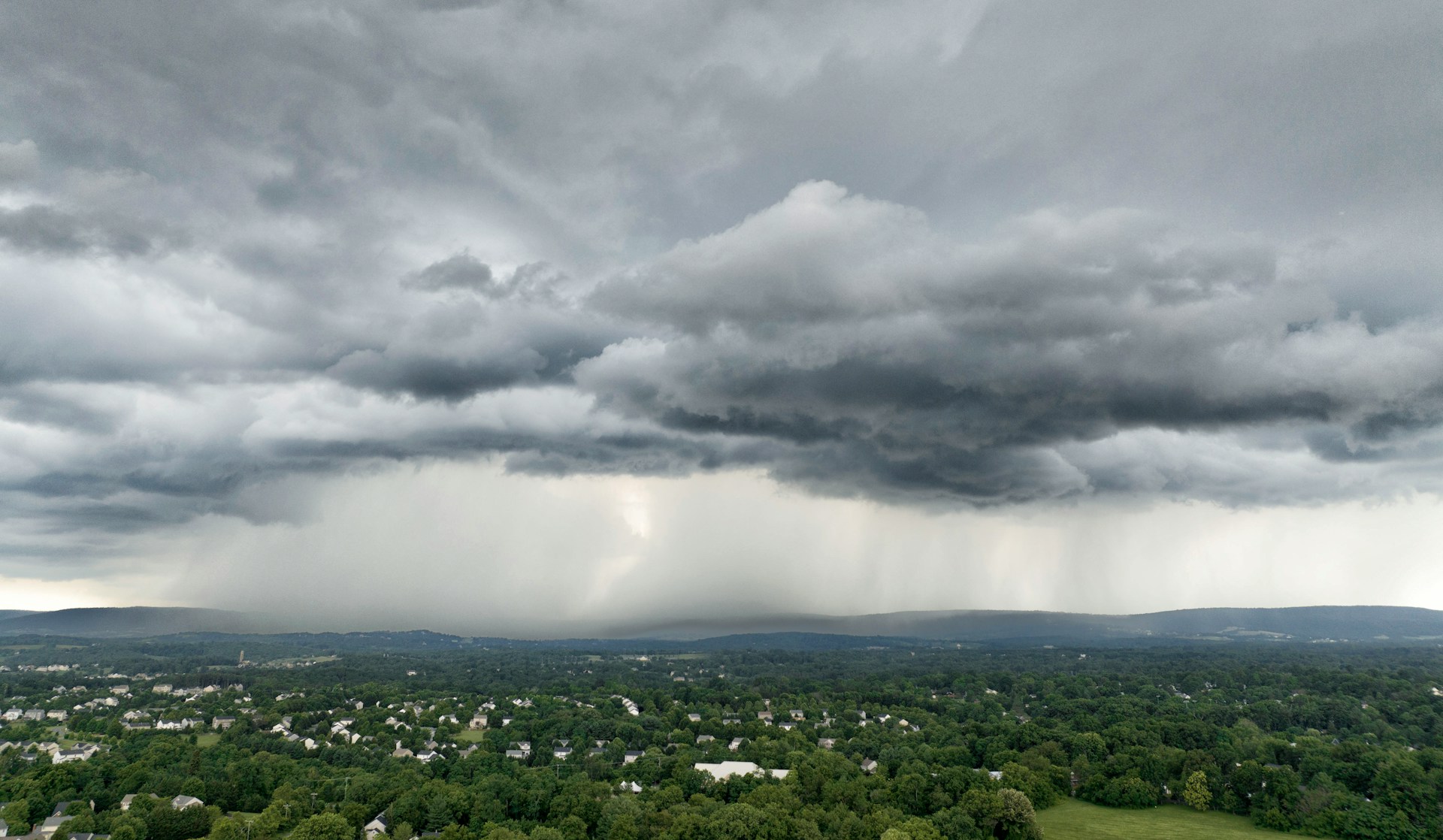
For those who live off the land, understanding the weather is not just a matter of convenience but a vital skill. Homesteaders and survivalists often rely on nature’s cues to predict the weather, allowing them to prepare for whatever conditions might arise. Here are five time-tested methods to forecast the weather, just like the mountain men of old.
Understanding atmospheric pressure is fundamental to predicting weather changes. Many natural phenomena, such as wind and rain, are directly influenced by shifts in air pressure. For those familiar with their local climate, gauging atmospheric pressure can provide significant insights into upcoming weather patterns.
One way to measure atmospheric pressure without modern gadgets is by constructing a simple barometer. This can be done using an empty bottle and a bowl of liquid, like oil. By placing the bottle upside-down in the liquid, you can observe changes: rising liquid indicates increased pressure, while falling liquid signals a drop in pressure.
If you lack these materials, starting a fire can also help assess atmospheric pressure. “If the smoke from your fire travels upward in a straight column, then air pressure is low. If falls and hovers around your camp, air pressure is high.”
Cloud observation is another ancient technique for weather prediction, offering clues up to a day in advance. Different cloud types provide different forecasts. Cirrus clouds, which are white and wispy, suggest fair weather. Cirrostratus clouds, on the other hand, indicate moisture is likely within the next 12 to 24 hours. Altostratus and altocumulus clouds both warn of impending storms, with altocumulus often preceding a storm by just a few hours. In contrast, stratocumulus clouds, which are fluffy, signal dry weather ahead. If nimbostratus clouds blanket the sky in gray, it’s probably already raining.

Wind movement is another straightforward way to gauge weather changes. Observing tree branches or simply feeling the wind with your finger can provide valuable insights. Strong winds typically result from significant pressure changes and often precede storms, whereas gentle winds suggest more stable conditions. The direction of the wind also holds clues, though these vary by region. In some areas, a westerly wind indicates fair weather, while an easterly wind might bring rain. It’s crucial to understand local wind patterns to make accurate predictions.

The moon offers another natural indicator of weather changes. A halo around the moon signifies dust particles in the atmosphere, which can herald moisture from a low-pressure system. Similarly, twinkling stars suggest a drop in air pressure. “The twinkling gets stronger when there’s a dip in air pressure,” and humid air can also enhance this effect.

Certain plants have evolved to sense and respond to weather changes, providing another tool for weather prediction. Some flowers remain closed when rain is imminent, while others, like the African Marigold, adjust their opening and closing times based on approaching rain. Observing these natural behaviors can provide early warnings of changing weather conditions.

Mastering these techniques can significantly enhance one’s ability to predict the weather, a critical skill for anyone living close to nature. By honing these methods, you can better prepare for whatever the elements might bring.
Let us know what you think, please share your thoughts in the comments below.
Preparedness
Security Secrets To Safeguard Your Home and Family

While we’d like to think of our homes as sanctuaries removed from societal dangers, the reality is quite different. The U.S. Department of Justice highlights that “Property crime is actually more likely in rural areas than suburban areas.” This increased risk is often due to the remoteness and slower police response times associated with rural living.
To safeguard your property and family, proactive measures are essential. One of the most straightforward and effective deterrents is having a dog. The presence of a dog, whether large or small, can discourage potential intruders. Sometimes, even a “Beware of Dog” sign can be enough to make a burglar think twice.
Lighting is another crucial element of homestead security. Motion-activated lights positioned near entryways and pathways can startle intruders and animal predators alike, providing protection for both your family and your livestock.
Investing in a security system is a wise choice for any homesteader. These systems come in various price ranges, catering to different needs and budgets. For those with limited funds or unreliable internet, battery-operated door and window alarms offer a practical alternative. Video surveillance, too, acts as both a deterrent and a means of gathering evidence should an intruder make their way onto your property.
Perimeter fencing is indispensable. It serves as a physical barrier, keeping animals in and unwanted visitors out. To enhance its effectiveness, ensure gates are lockable. A gate at the end of your driveway requiring visitors to buzz in can add an extra layer of protection.
In a charming anecdote from the Daily Yonder, Donna Kallner recounts, “[Our security system] was never quite as effective as my grandparents’ rural security system: Their farm was at the end of a gravel lane that had to be more than a half-mile long. About halfway down it, there was a big tree where a flock of guinea fowl perched. Any time a vehicle got that far those birds kicked up a ruckus.” While not everyone has guinea fowl, a driveway alarm with wireless monitoring can serve a similar purpose by alerting you to approaching visitors.
Complacency can lead to security oversights. It’s tempting to leave keys in tractors or garages, but this can make expensive equipment easy targets for theft. Ensuring your garage doors are secure is a worthwhile investment, as it prevents costly replacement of stolen items.
A safe is a must-have for any homestead, particularly a fireproof one for safeguarding important documents and valuables. To enhance door security, consider additional measures like deadbolts or door chain stoppers, offering extra time to react in case of an intrusion.
Strategic planting can also bolster security. Thorny plants around the perimeter and spiky bushes beneath windows create natural barriers that deter intruders. Additionally, using pea gravel on walkways can alert you to movement with its distinctive crunch underfoot.
Clear signage is vital, especially in areas frequented by hunters. Posting property markers and signs indicating video surveillance can discourage trespassers. Maintaining an appearance of occupancy is another effective strategy. Keeping a vehicle in the driveway, setting lights on timers, and ensuring the lawn is mowed can all suggest that someone is home.
Finally, fostering a good relationship with neighbors can be invaluable. They can help maintain your property’s appearance when you’re away and keep an eye out for any suspicious activity.
Incorporating these strategies into your homestead security plan can make a significant difference in protecting your property and loved ones.
Let us know what you think, please share your thoughts in the comments below.
Preparedness
Master Winter Power Outages with Essential Prep Tips

When winter storms strike, power outages can be a common, albeit inconvenient, occurrence. However, with a bit of foresight and preparation, you can mitigate the discomfort of these short-term disruptions. The key is to have a plan in place before the lights go out, ensuring that you’re not left scrambling in the dark for essentials like light sources, heat, and food.
A well-prepared “blackout” kit is your first line of defense against the chaos of a power outage. This kit, which can be stored in a bag or tote, should be easily accessible even in the dark. While your cell phone’s flashlight might be a handy tool, relying on it can quickly drain your battery. Therefore, it’s crucial to know how to reach your blackout kit without incident.
Light is a primary concern during any power outage. Your kit should include a variety of lighting options, such as flashlights and headlamps for hands-free use, and a lantern for omni-directional illumination. “At least one flashlight and headlamp per person is recommended.” For families with children, glowsticks can add a bit of fun to the situation. If space allows, solar-powered lighting is a sustainable option, though it may not be feasible for apartment dwellers with limited sunlight exposure. Importantly, candles should be avoided due to the fire hazard they pose, as demonstrated by a tragic incident involving an elderly neighbor during an ice storm.
Having extra batteries for all your flashlights is essential. There’s nothing worse than discovering a dead flashlight when you need it most. Aim to store at least one extra set of batteries, or better yet, two. Limiting your devices to one or two battery types can simplify this process. For an added layer of preparedness, consider including a solar charger and rechargeable batteries in your kit.
In addition to lighting, a combustion device like matches, a BBQ lighter, or a simple BIC lighter is useful, especially if you have a gas stove that may require manual ignition. These items are also handy for heating and cooking, which we’ll explore further.
Staying informed during a power outage is crucial, so a battery-operated or wind-up radio should be part of your kit. “A hand-cranked combo unit that gives you light, USB charging plus a radio too would be a good choice.” This not only keeps you updated on the situation but also provides a morale boost by connecting you to the outside world.
For longer outages, heating becomes a priority. Ideally, a wood stove installed beforehand can address both heating and cooking needs, provided you have a wood supply. If that’s not an option, a fireplace can offer some warmth, though it’s less efficient. To conserve heat, close all vents and doors, and minimize trips outside. Selecting a single room, such as a master bedroom, for everyone to gather can also help retain warmth. Block drafts with towels and cover windows or glass doors with plastic sheeting.
Dressing in layers is crucial for maintaining body warmth. “Warm socks that go up above the calf but that aren’t tight are recommended,” and wearing a stocking hat can further reduce heat loss. For families without a suitable room, “camping” in the living room can be an adventurous alternative, complete with tents or blanket forts.
Sleeping bags are invaluable for keeping everyone warm, and if they’re compatible, zipping two together allows for shared body heat. Don’t forget about your pets, who can also contribute to warmth. For pets in cages or aquariums, wrapping their enclosures with blankets can help conserve heat, and a battery-operated heater or bubbler is a wise investment.
While candles can provide some warmth, they should never be used while sleeping. Instead, portable, non-electric space heaters are a safer option. Ensure any propane heaters are rated for indoor use to avoid carbon monoxide buildup, and always maintain proper ventilation. A working carbon monoxide detector is a must when using any combustion-based heating.
Cooking during a power outage requires some creativity. If you have a wood stove, fireplace, or gas range, you’re in luck. Otherwise, a BBQ or camp stove can be used in a well-ventilated area like a garage with the door partially open. It’s critical to avoid using charcoal or kerosene indoors due to the rapid buildup of CO2.
For indoor cooking, a sterno or “canned heat” stove is a safe bet. These canisters burn long enough to prepare simple meals like scrambled eggs or heated soups. Alternatively, a denatured alcohol stove provides clean-burning heat without the risk of gas leaks, though it requires cooling before refueling.
By organizing and storing your supplies in an easily accessible location, you can significantly ease the stress of a short-term power outage. With a bit of planning, you can also expand your preparations for longer-lasting disruptions, ensuring you’re ready for whatever winter throws your way.
Let us know what you think, please share your thoughts in the comments below.
-
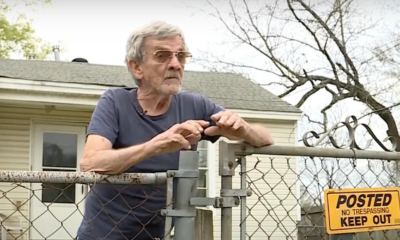
 Tactical9 months ago
Tactical9 months ago70-Year-Old Fends Off Intruder with Lead-Powered Message
-

 Preparedness6 months ago
Preparedness6 months agoEx-Ballerina’s Guilty Verdict Sends Tremors Through Gun-Owner Community
-
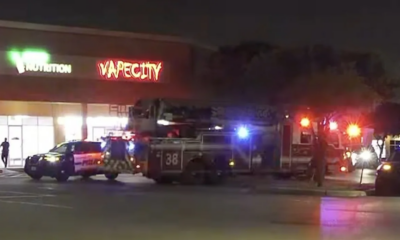
 Tactical9 months ago
Tactical9 months agoVape Shop Employee Confronts Armed Crooks, Sends Them Running
-

 Preparedness4 months ago
Preparedness4 months agoGood Samaritan Saves Trooper in Harrowing Interstate Confrontation
-
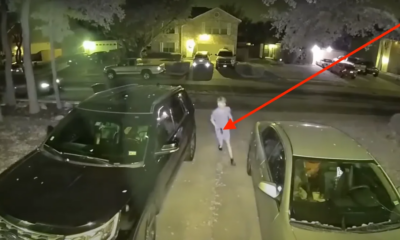
 Tactical9 months ago
Tactical9 months agoMidnight SUV Theft Interrupted by Armed Homeowner’s Retaliation
-

 Survival Stories1 year ago
Survival Stories1 year agoEmily’s 30-Day Experience of Being Stranded on a Desert Island
-

 Preparedness4 months ago
Preparedness4 months agoArizona Engineer’s Headless Body Found in Desert: Friend Charged
-

 Preparedness4 months ago
Preparedness4 months agoBoy Saves Dad from Bear Attack with One Perfect Shot